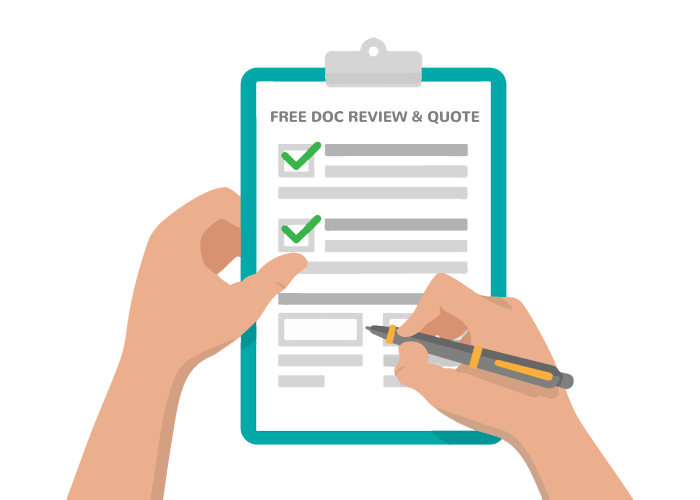Insurance companies save and distribute many documents as PDFs for the sake of ease and consistency but PDFs are often inaccessible to clients who use assistive technology. People with disabilities often use assistive technology like screen readers or refreshable Braille displays but PDFs are frequently inaccessible when they don’t include digital tags. That means people with disabilities may not be able to access necessary documents to keep their bills and benefits organized and up to date. With over 25% of the population having some disability, accessibility is vital to the success of your clients, your employees, and your company.
Documents that Need to be Accessible
Insurance companies provide their clients with important health and financial information that they need to be able to read and understand. When a person is unable to access those documents it can lead to delays or barriers to coverage and necessary healthcare.
PDFs can include:
- Explanations of Benefits
- Billing Statements
- Provider Lists
- Policy Manuals
- Coverage Information
Which laws apply?
Accessibility is legally required whether you’re a public or private company. It’s necessary to provide the best service for your clients.
Receive Federal Funding through Medicare or Medicaid
If your insurance company provides federally funded services like Medicare or Medicaid, Section 508 and Section 504 of the Rehabilitation Act apply to you. Section 508 requires that federal government websites and all files on websites, which most often include PDFs, be accessible to both employees and the general public who may access them. Section 504 requires organizations that receive federal funding make their resources accessible as well. Your documents must be accessible to everyone or you may lose your contracts and funding from government agencies.
Privately Funded
If your insurance company does not receive federal funding, it is likely considered a place of public accommodation, which is covered by the Americans with Disabilities Act (ADA). According to district court rulings, which were upheld by the Supreme Court, your website and all the files it contains need to be accessible to both employees and customers.
Results of Noncompliance
Your clients and employees – as many as 25% of them – won’t be able to access important healthcare and financial documents. “Think about your own daily life and how much you use the internet,” said Chris Danielsen, the Director of Public Relations at the National Federation of the Blind, and a blind person himself. “And then imagine almost every day you encountered something that you literally could not do.”
Inaccessibility Will Cost You Money
Frustrated users might just navigate away from your site and take their business elsewhere, but many may recognize your oversight as an unwillingness to comply with legally mandated standards and file a lawsuit to enforce those laws and protect their rights. If there are a number of other clients who also are unable to access important documents you might be faced with a class-action ADA lawsuit. Whether there’s one plaintiff or a group, litigation is expensive.
Frustrated website visitors will also seek another insurance company. They may tell their family that your insurance company doesn’t consider their needs, and out of support for their loved one, they may also seek insurance services elsewhere. Once again, you lose money.
Inaccessibility Leads to Litigation
In 2014, WellPoint Health Networks, Inc., now called Anthem, faced just such a lawsuit for failing to make their digital resources accessible. Plaintiffs Steven Mendelsohn and Sam Chen are both California residents and members of Anthem Blue Cross, a WellPoint company. They both have visual impairments and found the company’s website to be inaccessible. They filed a lawsuit and were able to enter into negotiations, after which Wellpoint signed an “accessibility settlement agreement” outlining how the company planned to comply with the Web Content Accessibility Guidelines (WCAG) 2.0. WCAG is a widely recognized set of standards that ensures accessibility when implemented correctly.
Avoiding Litigation and Reaching Every Client
PDF accessibility doesn’t have to be prohibitively time-consuming. Content creators can make individually-produced PDFs accessible with a little know how at the start. That might include individual documents such as lists of covered medical supplies, informational brochures about preventative treatments, or booklets of in-network providers, which are remediated by the creator in the source file.
No time, manpower, or know-how to remediate in-house? RemDoc can help with our PDF accessibility services to remediate documents for you.
Be Proactive
If you haven’t approached PDF accessibility yet, the time is now to start. Be proactive and make your website and every document on it accessible so your clients and employees can access necessary information. RemDoc can help make the process efficient and easy so every document can be accessible from their start.





